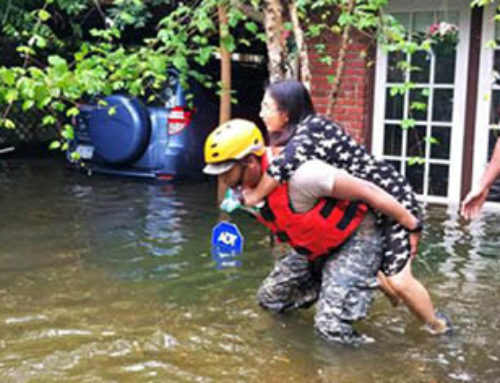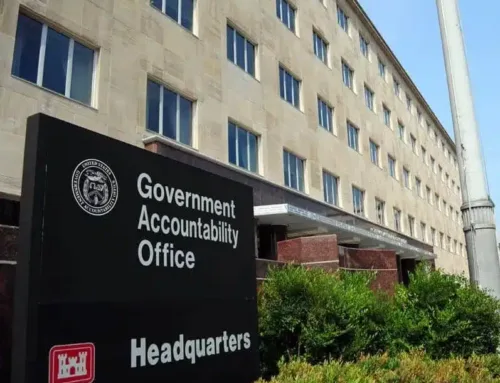From our inception, Taxpayers for Common Sense has worked on the National Flood Insurance Program and disaster spending issues.
Hurricane Harvey has raised specific questions about both. First the reauthorization and sustainability of NFIP and second, some questions about appropriate disaster relief and Harvey vis-à-vis the Sandy disaster emergency supplemental appropriations.
We’re mindful that many people are still dealing with floodwaters in Texas and Louisiana, but there have been a lot of questions and issues raised by the media that we want to delve into deeper.
NFIP has roughly 5 million policies nationwide and takes in a little more than $3.3 billion in premiums in a given year. In the 2005 storm season ($17.8 billion in losses), Superstorm Sandy ($9.5 billion in losses in 2012) put the program more than $23 billion in debt. Last year a $3.7 billion loss year (the third largest in program history), added to that debt—which now stands at $24.6 billion. The Sandy Supplemental Spending bill authorized the program to borrow up to $30.4 billion from the Treasury. See more on NFIP in my recent testimony here.
Harvey and Harris County
Harris County, TX (which includes Houston) has nearly 250,000 flood insurance policies. Those policies reflect more than $70 billion in NFIP coverage. Clearly every policy – or even most – is not going to be a total loss. But if there are claims of even 15 percent of total insured value, that would represent a $10.5 billion loss to NFIP. More than Sandy, and clearly enough to bust the borrowing limit. If that isn’t enough, the authorization for NFIP expires at the end of September. It’s unlikely to expire, but if it did, policyholders will still have coverage, but no new policies can be issued.
Harvey is exhibit C that the NFIP sorely needs reform. (Katrina and the 2005 storms are exhibit A and Sandy exhibit B.) The subsidies in the program are clearly not sustainable. Even lawmakers who are the most ardent status quo seekers have to realize that in the long run this program cannot survive as is. Right now, subsidies are tied to the property and are provided regardless of need. There should be means-tested premium assistance for those who need it, not broad based subsidies. The best way to reduce rates is by reducing risk, so mitigation should be targeted toward that end. Flood rate maps have to be more granular and more accurate. North Carolina is leading the way in this area with LiDAR data available online for riskiest areas. Lawmakers should clarify that private flood policies can be used to meet the mandatory purchase requirement. (Homeowners with a federally-backed mortgage living in the 100-year or 1 percent flood risk floodplain are required by law to purchase flood insurance).
Past NFIP reforms have helped save taxpayer cash. The 2012 reauthorization directed FEMA to investigate purchase of reinsurance (insurance for insurance companies). This year, FEMA bought $1 billion of reinsurance and that will likely mean NFIP will at least borrow $1 billion less from the Treasury to respond to Harvey than it otherwise would have.
Disaster Assistance Reforms
But the problem we face is not just about the future of flood insurance, it’s about the nation’s disaster policies. Federal share of disaster spending is growing, but we’re not getting better results. We’ve heard comments that Harvey and how the storm acted was an unpredictable event. C’mon.
In the case of Houston, the scale may have been greater, but a huge magnitude flood was entirely predictable, even expected. Furthermore, disasters can happen anywhere so we have to be prepared everywhere. Unpredictable is a cop-out. In 2005, all the storm names were exhausted and the Hurricane Center moved on to letters in the Greek alphabet. Sandy was a superstorm, a Jurassic Park that meteorologists rarely actually get to see in real life. We’ve had enormous rain events in recent years. In short, the country has to prepare for the unpredictable.
If it is to be sustainable, federal disaster aid should be tied to how much communities and states prepare for these inevitable disasters, which will happen and should be prepared for more aggressively. Every dollar should “pre-spond” to future disasters so damage is avoided and another dollar is not necessary. States and communities should be required to pursue private insurance for public infrastructure. The federal share of disaster assistance has gone from less than 30 percent after Hurricane Hugo in 1989, to 75 percent after Sandy.
Sandy Supplemental Controversy
Because the Sandy supplemental appropriations were so contentious, any assistance for Harvey and its supporters are coming under scrutiny. Taxpayers closely analyzed the Sandy supplemental and tracked the changes between the President’s request, Senate bill and final House bill. That is available here and discussion of changes here. People have asked us about wasteful spending in the bill. It’s instructive to see what we said at the time:
“The Frelinghuysen amended Sandy supplemental isn’t riddled with “pork” per se, in fact in many ways it’s better than what the Senate passed last year. But far too much of it is not emergency and should be done in the context of the regular budget process. We cannot afford to fund our prevention, protection, and resiliency in slip-shod occasional emergency spending bills. Instead, it should be ingrained in the regular budget process.”
But was it “Sandy” funding? Even if not all emergency funding, clearly the bulk of it was Sandy related. The vast majority of Corps of Engineers funds were for the affected region. So too with the allocation of the Community Development Block Grant funds and highway and transit funds. From our analysis of HUD data, $13 billion of the CDBG funds went to New Jersey, New York, and New York City. NFIP borrowing authority increased and funds for the Disaster Relief Fund were more general, but triggered by Sandy impacts. That’s the vast majority of funding in the bill.
“Emergency” funding
With the 2009 stimulus wrapping up, the Recovery Act Transparency (RAT) board was assigned to track Sandy spending. Problem is Congress – unlike in the stimulus – didn’t require all the funding to be tagged “Sandy” which made it hard to track. Here’s a link to our efforts to track the funds. The last RAT board report (3/31/2015) found that just over half of the Sandy funding had been obligated and 30 percent had been outlaid (check went/is already out the door). That’s two full years after it was appropriated and nearly two and a half years after the storm hit. Some Katrina funds weren’t spent many years after the storm.
Indeed, some of this funding shouldn’t be dubbed “emergency” simply because it was Sandy-related. For instance the funding for repair of Department of Defense facilities is a tiny fraction of the DOD O&M budget and could easily be absorbed. Or for the agencies that lost cars, other car retirements can be delayed or cars transferred from elsewhere in the country. Post-disaster shouldn’t be about making every federal agency whole, but prioritizing existing funding with emergency cash helping out.
In conclusion, this is an additional area for reform of disaster assistance. Just like the “fog of war” there is a “fog of disaster” and the country would be better served to mete out funds more deliberately. Taxpayers for Common Sense would like to see that more deliberative approach to disaster rather than the strike-while-the-iron-is-hot “get all the cash at once when Uncle Sam’s wallet is open” approach. Even if the total funding level is approved all at once, but then subject to triggers or justification, taxpayers—especially those dealing with the aftermath of a disaster— will get a better result.










Get Social